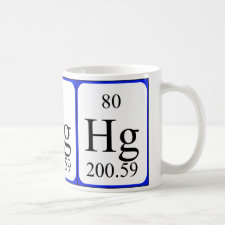
Authors: Mergola L, Scorrano S, Bloise E, Di Bello MP, Catalano M, Vasapollo G, del Sole R
Article Title: Novel polymeric sorbents based on imprinted Hg(II)-diphenylcarbazone complexes for mercury removal from drinking water.
Publication date: 2016
Journal: Polymer Journal
Volume: 48
Page numbers: 73-79.
DOI: 10.1038/pj.2015.79
Alternative URL: http://www.nature.com/pj/journal/v48/n1/full/pj201579a.html
Abstract: This study describes the preparation of ion-imprinted polymers (IIPs) for the selective removal of Hg(II) ions from aqueous media. Polymeric sorbents were prepared using different synthesis approaches to understand the influence of diphenylcarbazone (DPC), used as non-polymerizable ligand, on absorption performance. In particular, bulk polymerization was first used to prepare two polymers, IIP1 and IIP2, in the absence and presence of DPC. The trapping of the ligand in IIP2, demonstrated by Fourier Transform Infrared Spectroscopy, promotes the formation of ternary complexes with mercury ions, and 4-vinylpyridine induces an increase in binding performance, as indicated by the Ka values (1.7 x 10^3 ± 0.4 M-1 and 12.1 x 10^3 ± 0.5 M-1, respectively) of IIP1 and IIP2 high affinity binding sites. A third polymer (IIP3) was also synthesized using precipitation polymerization to evaluate the contribution of morphological characteristics on absorption performance compared with the addition of DPC. Competitive studies revealed a stronger influence of IIP3 morphology on selectivity performance. Indeed, monodisperse microbeads were obtained only in this case. Finally, the applicability of the polymers to real-world samples was demonstrated through batch experiments using drinking water spiked with 1 μg ml-1 of Hg(II) ions, and the best removal efficiency of nearly 80% was obtained for IIP2
Template and target information: mercury ion, Hg(II)



Join the Society for Molecular Imprinting

New items RSS feed
Sign-up for e-mail updates:
Choose between receiving an occasional newsletter or more frequent e-mail alerts.
Click here to go to the sign-up page.
Is your name elemental or peptidic? Enter your name and find out by clicking either of the buttons below!
Other products you may like:
 MIPdatabase
MIPdatabase









